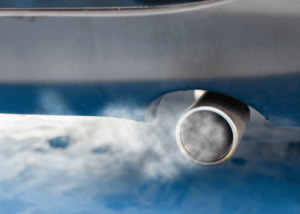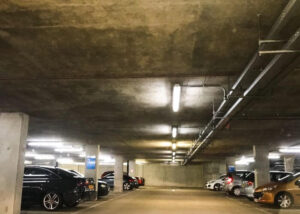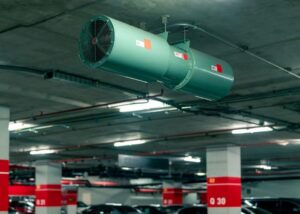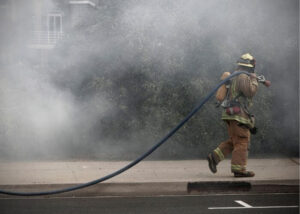Any HVAC engineer will tell you that enclosed car park ventilation is a critical aspect of building design and safety. It ensures that the car park environment is safe for drivers, passengers, and pedestrians by removing harmful pollutants and preventing the buildup of toxic gases. This is especially important as cars produce carbon monoxide, nitrogen oxide, and other harmful chemicals that can be dangerous to human health.

The regulation of enclosed car park ventilation is essential for ensuring safety. In many countries, there are specific regulations and guidelines that govern enclosed car park ventilation systems. These regulations help to ensure that car parks are safe, healthy, and comfortable for everyone who uses them.

In Australia, regulations may vary between states and territories. It’s always best to consult with local authorities and relevant building codes for the most up-to-date and accurate information.
Here are some key things you need to know about enclosed car park ventilation regulations:
-
Ventilation requirements
Enclosed car park ventilation requirements vary depending on the size of the car park, the number of cars, and the type of ventilation system. Generally, car park ventilation systems should provide at least six air changes per hour.
Building Code of Australia (BCA) sets out minimum standards for the design, construction, and performance of buildings, including requirements for ventilation systems in enclosed car parks.

The BCA provides guidelines on minimum air change rates, carbon monoxide (CO) control, and smoke management in car parks. These regulations aim to ensure the safety and well-being of occupants in terms of air quality, fire safety, and the removal of hazardous gases. Speak to our team at iHVAC to discuss in detail about your project requirements.
-
Fan operation
Fans are critical components of enclosed car park ventilation systems. They help to circulate air and remove pollutants. Some of the general guidelines and standards that can be considered here are:

- Fan Capacity: The fan capacity should be determined based on the size and layout of the car park, taking into account factors such as the number of vehicles, the height of the space, and the desired air change rate. The fan capacity should be sufficient to provide effective air movement and ventilation within the car park.
- Smoke Management: In the event of a fire, fans may be required to assist in smoke management. The design and installation of fans should comply with the relevant fire safety regulations, including provisions for smoke extraction and smoke control.
- Noise Levels: Fan noise can be a concern in enclosed car parks. The fans should be selected and installed in a manner that minimizes noise levels and complies with applicable noise regulations and standards.
- Energy Efficiency: Energy efficiency is an important consideration in building design. Fans used in car park ventilation should be selected and operated in a way that promotes energy efficiency and reduces unnecessary energy consumption.
-
Carbon monoxide monitoring
Carbon monoxide is a colourless, odourless gas that can be fatal in high concentrations. Enclosed car parks are at high risk for carbon monoxide buildup due to car exhaust fumes. To prevent this, regulations require that carbon monoxide monitoring systems be installed in enclosed car park ventilation systems.

To address CO emissions in car parks, the Australian standards typically consider factors such as the size and usage of the facility, the number of vehicles, and the types of fuel used. Ventilation systems are designed to provide sufficient air changes per hour (ACH) to maintain acceptable CO levels.
The standards for enclosed car parks are based on the recommendations of the Australian Standard AS 1668.2, which covers mechanical ventilation and air conditioning in buildings. AS 1668.2 provides guidance on minimum ventilation rates, air distribution, and exhaust system design to ensure appropriate indoor air quality. Contact our team at iHVAC to discuss system solutions engineered to meet all Australian regulations for your next project.
-
Smoke ventilation
In the event of a fire, smoke ventilation systems are essential for evacuating smoke and allowing firefighters to access the building. Regulations require that enclosed car park ventilation systems should have a separate smoke ventilation system that is connected to the fire alarm system.

The specific requirements for smoke ventilation systems in car parks can vary, but they typically cover aspects such as smoke exhaust, airflow rates, smoke extraction methods, and system design. The regulations often specify the necessary smoke extraction rates, the positioning of smoke exhaust points, and the integration of smoke control systems with fire detection and alarm systems. Contact our team at iHVAC to discuss system solutions engineered to meet all Australian regulations for your next project.
-
Maintenance requirements
Regular maintenance and testing of enclosed car park ventilation systems are essential to ensure that they continue to function effectively. Australian regulations require that car park ventilation systems should be inspected and tested at regular intervals to ensure that they comply with regulatory requirements.

As some of the regulations may vary between states and territories in Australia, it’s important to consult the specific authorities for the most up-to-date and accurate information. Alternatively, contact our team at iHVAC to discuss system solutions engineered to meet all Australian regulations for your next project.
